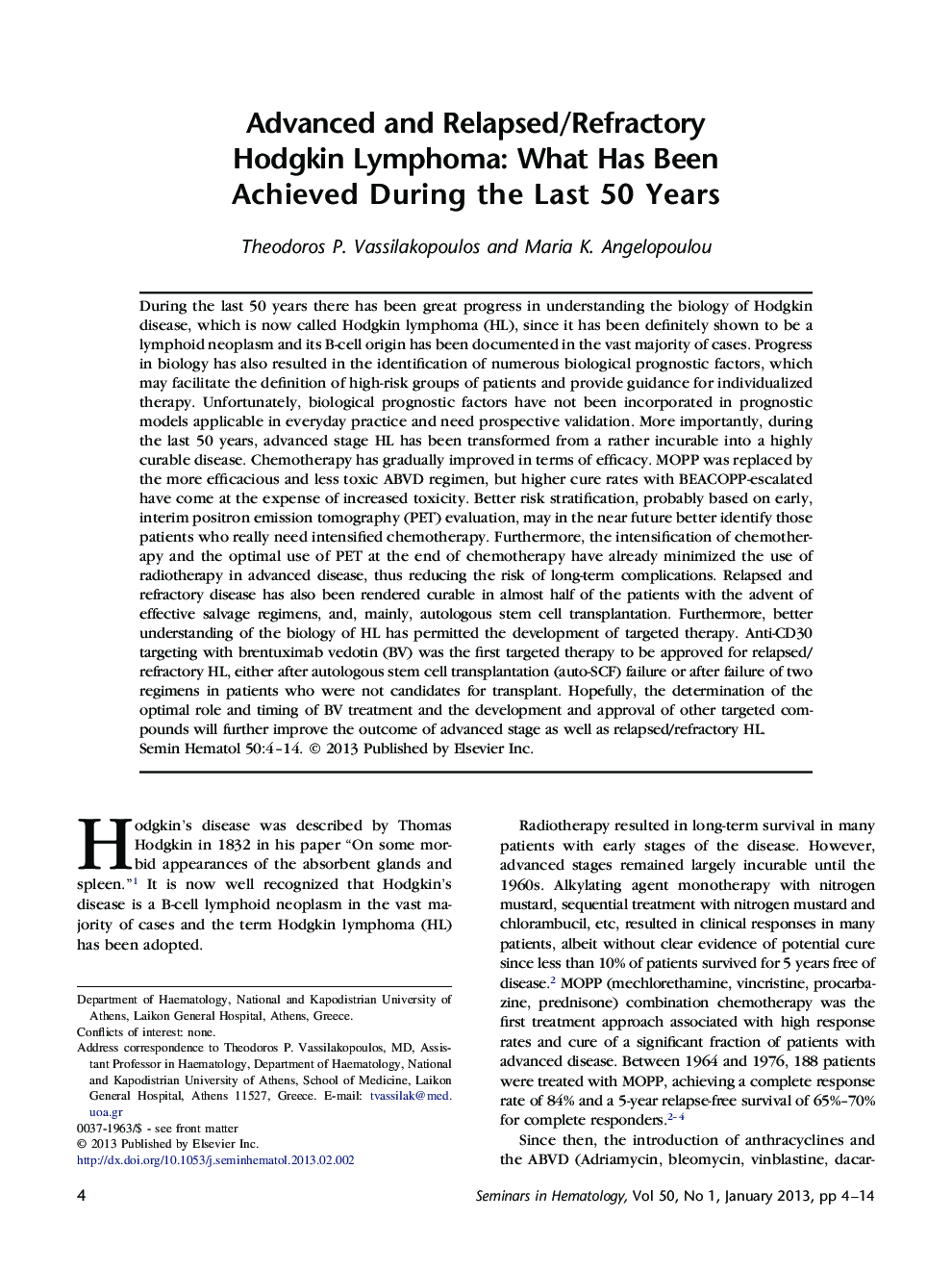| Article ID | Journal | Published Year | Pages | File Type |
|---|---|---|---|---|
| 6113795 | Seminars in Hematology | 2013 | 11 Pages |
Abstract
During the last 50 years there has been great progress in understanding the biology of Hodgkin disease, which is now called Hodgkin lymphoma (HL), since it has been definitely shown to be a lymphoid neoplasm and its B-cell origin has been documented in the vast majority of cases. Progress in biology has also resulted in the identification of numerous biological prognostic factors, which may facilitate the definition of high-risk groups of patients and provide guidance for individualized therapy. Unfortunately, biological prognostic factors have not been incorporated in prognostic models applicable in everyday practice and need prospective validation. More importantly, during the last 50 years, advanced stage HL has been transformed from a rather incurable into a highly curable disease. Chemotherapy has gradually improved in terms of efficacy. MOPP was replaced by the more efficacious and less toxic ABVD regimen, but higher cure rates with BEACOPP-escalated have come at the expense of increased toxicity. Better risk stratification, probably based on early, interim positron emission tomography (PET) evaluation, may in the near future better identify those patients who really need intensified chemotherapy. Furthermore, the intensification of chemotherapy and the optimal use of PET at the end of chemotherapy have already minimized the use of radiotherapy in advanced disease, thus reducing the risk of long-term complications. Relapsed and refractory disease has also been rendered curable in almost half of the patients with the advent of effective salvage regimens, and, mainly, autologous stem cell transplantation. Furthermore, better understanding of the biology of HL has permitted the development of targeted therapy. Anti-CD30 targeting with brentuximab vedotin (BV) was the first targeted therapy to be approved for relapsed/refractory HL, either after autologous stem cell transplantation (auto-SCF) failure or after failure of two regimens in patients who were not candidates for transplant. Hopefully, the determination of the optimal role and timing of BV treatment and the development and approval of other targeted compounds will further improve the outcome of advanced stage as well as relapsed/refractory HL.
Related Topics
Health Sciences
Medicine and Dentistry
Hematology
Authors
Theodoros P. Vassilakopoulos, Maria K. Angelopoulou,
